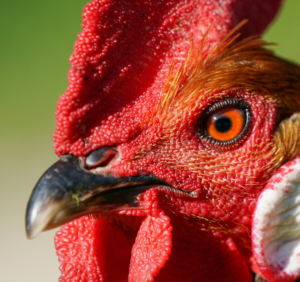Enter your address to receive notifications about new posts to your email.
Articles tagged Fundamental Research
(129 results)
-
Science & Publishing
Yao-Wu Yuan joins GENETICS as an associate editor
A new associate editor is joining GENETICS in the Genetics of Complex Traits section. We’re excited to welcome Yao-Wu Yuan to the editorial team.
-
Community Voices
Early Career Leadership Spotlight: Md Riajul Hossain
We’re taking time to get to know the members of the GSA’s Early Career Scientist Committees. Join us to learn more about our early career scientist advocates. Md Riajul HossainPolicy and Advocacy SubcommitteeUniversity of Arkansas Research Interest When I was introduced to science in high school, I discovered that biology attracted me the most. This attraction…
-
Science & Publishing
Gary Churchill joins G3 as new Senior Editor
A new senior editor is joining G3: Genes|Genomes|Genetics. We’re excited to welcome Gary Churchill to the editorial team.
-
Community Voices
Early Career Leadership Spotlight: Kat Yamamoto
We’re taking time to get to know the members of the GSA’s Early Career Scientist Committees. Join us to learn more about our early career scientist advocates. Kat YamamotoCommunity and Membership Engagement SubcommitteeQueens College and the Graduate Center of the City University of New York Research Interest Organisms face many microbes in their environment, and the…
-
Science & Publishing
New associate editor, Beatriz Vicoso, joins GENETICS
A new associate editor is joining GENETICS in the Empirical Population and Evolutionary Genetics section. We’re excited to welcome Beatriz Vicoso to the editorial team.
-
Community Voices
Early Career Leadership Spotlight: Sarah Gilmour
We’re taking time to get to know the members of the GSA’s Early Career Scientist Committees. Join us to learn more about our early career scientist advocates. Sarah GilmourMultimedia SubcommitteeStowers Institute for Medical Research Research Interest Questions of evolution have always fascinated me. I am extremely fortunate to be starting out my research career in a…
-
Science & Publishing
GENETICS welcomes Sarah Otto as an associate editor
A new associate editor is joining GENETICS in the Theoretical Population and Evolutionary Genetics section. We’re excited to welcome Sarah Otto to the editorial team. Sarah OttoAssociate Editor Sarah (Sally) Otto is a Killam University Professor at the University of British Columbia. Her research focuses on modelling how inheritance and reproductive systems evolve by investigating…
-
Science & Publishing
Scientists pinpoint the “fight” in fighting chickens
A genome-wide association study published in G3: Genes|Genomes|Genetics offers insights into the genetic origins of aggression in gamecocks.
-
Science & Publishing
Congratulations to the #TAGC24 Poster Award winners!
We are pleased to announce the recipients of the GSA Poster Awards for posters presented at The Allied Genetics Conference 2024! Undergraduate and graduate student members of GSA were eligible for the awards, and a hard-working team of judges made the determinations. Congratulations to all! Faith Akoachere, Syracuse University Functional characterization of systemic RNA interference in…
-
Community Voices
Early Career Leadership Spotlight: Jessie MacAlpine
We’re taking time to get to know the members of the GSA’s Early Career Scientist Committees. Join us to learn more about our early career scientist advocates. Jessie MacAlpineCommunication and Outreach SubcommitteeUniversity of Toronto Research Interest I am passionate about using molecular genetics to understand fundamental biology. During my undergraduate studies at the University of Toronto,…
-
Science & Publishing
New associate editor, Xiajing Tong, joins GENETICS
A new associate editor is joining GENETICS. We’re excited to welcome Xiajing Tong to the editorial team. Xiajing TongAssociate Editor Xiajing Tong obtained her BS from the University of Science and Technology of China and earned her PhD from the Chinese Academy of Sciences. She conducted her postdoctoral training with Joshua Kaplan at Massachusetts General…











